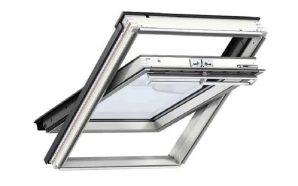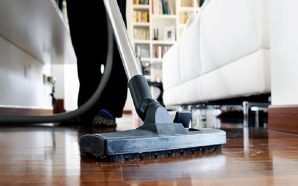When spring comes around, windows are the first thing we want to wash, but we don’t mind if they get dusty during the summer. Sparkling, streak-free windows are on most people’s top five surfaces that make them feel good. A sparkling, streak-free window makes us happy, but it’s a less favourable chore to everybody.
Getting a crystal-clear window can be challenging. No matter how hard you try, you’re often chased by smears and smudges. Hopefully, there are some things you could do to clean your windows as efficiently as possible. Just follow these tips to ease your window cleaning process.
What to do before you start cleaning your windows?
Preparation is essential for quality results!
It’s time to get your windows clean! First, remove dust from the frame, tracks, and sill with a vacuum, duster, or cloth. Then do the same with your blinds or shades. Curtains can be removed and washed at this time, too – just follow the care instructions.
Screens can get pretty dirty, so it’s important to clean them regularly. The best way to remove dust is to vacuum or brush them off. Wash with a warm, sudsy mix for a deeper clean, then rinse and dry completely.
Cleaning your windows is the right time to check if your windows need repair work.
Tip # 1: Choose High-Quality Equipment
- Bucket – Buy a large bucket that will fit a mop and a squeegee. It’s recommended to be rectangular shaped.
- Cleaning solution (dish soap, homemade or specialised chemical) – It’s your choice to use a homemade or commercial cleaner. Most homemade cleaners aren’t bubbling up a lot, but this is essential for window cleaning because bubbles separate where dirt is.
- Squeegee – For you, this may be a simple tool, but actually, it’s the essential tool of all. It does a great job of washing the outside windows. Buy a durable one with a suitable shape for your type of window.
- Scraper – Scrapers do a great job removing caked-on gunk from windows, such as insects, paint, and varnish. However, they should be used carefully; otherwise, you could damage your windows. A three-inch scraper with replaceable blades is appropriate for window cleaning sessions.
- Microfiber cloth
- White vinegar
- Toothbrush
- Sturdy ladder
- Mop – The most important thing to consider when buying a mop is its length and water retention. It’s recommended sleeves be 14 inches long.
Tip # 2: Clean the Frame First
When cleaning your windows, start by cleaning your tracks and frames. Grit and grime can build up in these areas, and when mixed with window cleaner, it may form an unsightly sludge that can drip onto the glass while cleaning. To remove the dirt, use an old toothbrush and some baking soda mixed with vinegar. Scrub inside the tracks, then wipe away any remaining residue with a damp cloth.
Tip # 3: Choose the Right Water Temperature
Always use cold or room-temperature water when cleaning your windows during the cold months. Hot water can cause the cold glass to crack.
Warm water is more successful at removing dirt than cold water. As it’s easier to fill a bucket with cold water and clean your windows, there are some benefits of using warm water to get better results.
- This is because warmer temperatures cause the dirt particles to move around more, making them easier to wipe away.
- We often think of cleaning as simply removing dirt and grime, but it’s important to remember that we’re also trying to kill any bacteria that may be present. Hot water does a great job of accomplishing this, much better than cold water.
- It removes grease much easier than cold water.
- Cleaning your windows with the right temperature water will help them dry quicker, and your windows will be less likely to streak.
Tip # 4: Choose the Right Time
When the sun is shining directly on your windows, it can cause your cleaner to dry and evaporate before you have a chance to wash it away properly. This can lead to streaks that are difficult to remove. On cloudy days, there is less glare from the sun, making it easier to spot streaks.
Tip # 5: Scrub First
To scrub the windows, you can use a microfiber cloth to collect dust and dirt and leave nothing behind.
If you are using a mop – damp the mop and scrub the windows. If the dirt isn’t coming off, use the scraper to remove it. Make sure you use the scraper blade in a forward motion, not backward, to avoid causing scratches.
Tip # 6: Clean From Top to Bottom
Most people don’t use the rubber-bladed squeegee tool right. The proper technique is, to begin with, the top of the windows and work horizontally without tilting. Otherwise, the water will come out from the bottom. Dry the blade with a clean cloth after each stroke. When you finish washing the windows, dry the edges with a cloth.
Extra tip: Use a Mop for the Hard-To-Reach Spots
Cleaning high exterior windows can be a bit of a pain, but there are some things you can do to make the process easier. First, use a sponge mop on a pole to clean the windows with soapy water. Then rinse the windows with a hose and use a dry mop or squeegee to remove the water and prevent streaks from drying on the glass.
Tip #7: Make Your Own Cleanser
It’s much easier to use window cleaner spray and a lint-free cloth for interior windows cleaning. But sometimes commercial brands’ products are costly and do the same job as homemade ones. So make your own cleaner and invest the money in something more beneficial. You can try this recipe as a start:
- 1 cup white vinegar
- 1/2 teaspoon dish of detergent
Combine the ingredients in a bucket (2l water) and increase the amounts as needed.
Expert answer 1: Are newspapers an effective window-cleaning and scrubbing tool?
Growing up, many people used newspapers to clean windows – following the popular belief that vinegar and paper make for the best solution. But is this really effective? Or is it simply an outdated method that people have continued to do because it’s what they’ve always known?
As newspapers were a part of daily life in the past, using them to get cleaner windows was a cheap and easy way. Compared to the rags that leave streaks and smudges and have to be washed regularly, newspapers are made from dense material with soft fibres that are very tightly packed together.
Some theories revolve around the idea that the old petroleum-based ink had a grit comparable to light sandpaper. Also, the idea that the solvents used to make the older inks were effective cleaners is widely spread alongside the theory that the paper itself, with its gritty texture, is the key to cleaning windows.
Despite the debate that the old ink was the actual cleaning tool, the vegetable-based inks used today are less likely to streak than the inks of the past. The structure of the paper is something worth researching. Most of the kitchen paper you can find in the market has a special ingredient- sizing – to make it water-repellent. On the other hand, newspapers have little to no sizing, making them super absorbent. This quality is important, so they have to hold onto the ink printed on them. The high absorbency of newspapers is actually the secret key to the effectiveness of newspapers in cleaning windows.
So, cleaning windows with newspaper may be accepted as a nice tradition of the past, but if you want to try this method, you will need to make a simple cleaning solution. Mix equal parts of water and vinegar, and take the newspaper as you would use a regular rug.
Expert answer 2: Are There Alternatives To Newspaper For Cleaning Windows?
Squeegees and microfiber cloths are 2 of the most popular alternatives to newspapers for cleaning windows. Below we discuss the pros and cons of each one.
Squeegee
Pros:
1) It dries stains faster and leaves no residue behind.
2) Suitable for even large surfaces.
3) Reusable, so you won’t have to buy new products every time you clean your windows.
Cons:
1) Compared to newspapers, it is more expensive.
2) Leaves behind small streaks that can be easily scraped off with a towel.
Microfiber cloth
Pros:
1) The tiny microfibers will pick up dust and lint.
2) This material is very absorbent, holding up to eight times its weight in water.
3) Can reduce the use of chemicals.
4) It is reusable.
Cons:
1) Not environmentally friendly.
2) It is impossible to remove oil from a microfiber cloth, so it cannot be reused if it is used to remove oil splatters.
Conclusion
To get the best results cleaning your windows it’s essential to do some preparation, get the right tools and follow the essential tips we gave you.
Homemade cleaning solutions can save you money and give you the same quality results as the market chemicals.
You can replace the usage of newspaper with a good squeegee and a microfiber cloth.
If you feel like you don’t have the time and energy to clean your windows, you can always turn to a professional window cleaning company.









